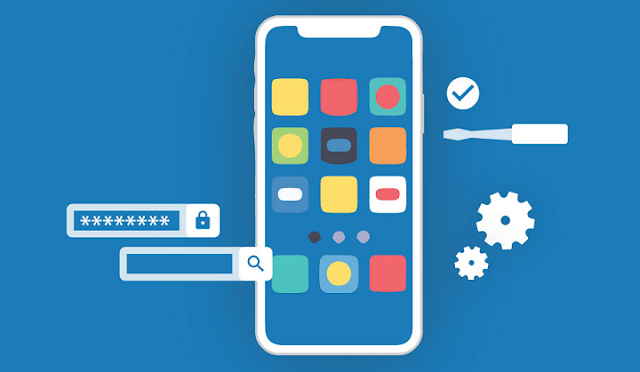People spend more time and money on apps than ever before. The average person uses nine apps per day according to TechCrunch. Meanwhile, Apple and Google rake in billions of dollars each year in app market sales.
 If you're considering entering the app market with your business, now is a great time to learn the app development process.
If you're considering entering the app market with your business, now is a great time to learn the app development process.
Once you have a concept you like, conduct a bit of research.
Take the temperature of the current app market. Are there other apps like yours already published? If so, how can you improve on the concept and do something new?
As you conduct market research, create a business document. Outline your core concept, the app's purpose, your target audience, programs and languages you'll use to code your app, and a development timeline.
Create a wireframe for each screen. Include any text, boxes, or interactive buttons for a given screen.
If you're not a great artist, don't worry, you can still create an effective wireframe. Google posted a fantastic example of how to wireframe an Android app, so use that as your basis.
The design process is the meat of the app development process, so don't feel bad if it takes longer than any other step.
Take your time and put yourself in the shoes of your users. Design your UX around what's easiest and most enjoyable for them.
Still, your prototype needs to serve as a representation of your final product. Do your best to deliver a polished prototype.
You'll want as much feedback as possible, so you may want to use Mobile App Testing software like pCloudy, which offer a detailed report of any bugs.
But this isn't the end of your journey. Now you'll need to outline the life cycle of your app. Add new features and experiences to keep users coming back for months. Decide how long you'll support your app and continue updating it accordingly.
Remember what you've learned today and stick to your outline. You'll have a five-star app in no time!
If you have any questions or want a professional consultation, reach out today.

6 Important Stages of Mobile App Development
Here's a rundown on each step of the app development process and with what you can expect along the way.#1 Concept And Research
Before you can create a world-changing app, you'll need a great idea along with some data to back it up. Start brainstorming fun app ideas.Once you have a concept you like, conduct a bit of research.
Take the temperature of the current app market. Are there other apps like yours already published? If so, how can you improve on the concept and do something new?
As you conduct market research, create a business document. Outline your core concept, the app's purpose, your target audience, programs and languages you'll use to code your app, and a development timeline.
#2 Wireframe Creation
It's time to put your ideas into action. The first step in the design process is known as wireframing. During this step, you'll create a skeletal version of your app.Create a wireframe for each screen. Include any text, boxes, or interactive buttons for a given screen.
If you're not a great artist, don't worry, you can still create an effective wireframe. Google posted a fantastic example of how to wireframe an Android app, so use that as your basis.
#3 Design
Using your wireframe as a basis, it's time to get creative and flesh out your app.The design process is the meat of the app development process, so don't feel bad if it takes longer than any other step.
Take your time and put yourself in the shoes of your users. Design your UX around what's easiest and most enjoyable for them.
#4 Prototype
By now you should have a working prototype of your app. It doesn't need to be finished. This is just the first draft, so you can change design elements or add or remove elements later on.Still, your prototype needs to serve as a representation of your final product. Do your best to deliver a polished prototype.
#5 Testing
Spend a few days testing every aspect of your app. Give it to your family and friends and let them play around with it, too. Ask for their feedback and refine your prototype until it's perfect.You'll want as much feedback as possible, so you may want to use Mobile App Testing software like pCloudy, which offer a detailed report of any bugs.
#6 Release And Post-Release
Once you're finished testing your app, you're ready to submit it to Apple and Google. After getting the all-clear, take a deep breath. You're officially an app developer!But this isn't the end of your journey. Now you'll need to outline the life cycle of your app. Add new features and experiences to keep users coming back for months. Decide how long you'll support your app and continue updating it accordingly.
Your Guide to The App Development Process
If you've never developed an app, the app development process can seem rather intimidating. Don't worry, you've got this.Remember what you've learned today and stick to your outline. You'll have a five-star app in no time!
If you have any questions or want a professional consultation, reach out today.
No Comment to " Top 6 Stages of Mobile App Development "
Please make your real thoughts/comments and don't spam. Spam comments will be removed immediately.